The Origin trip – India
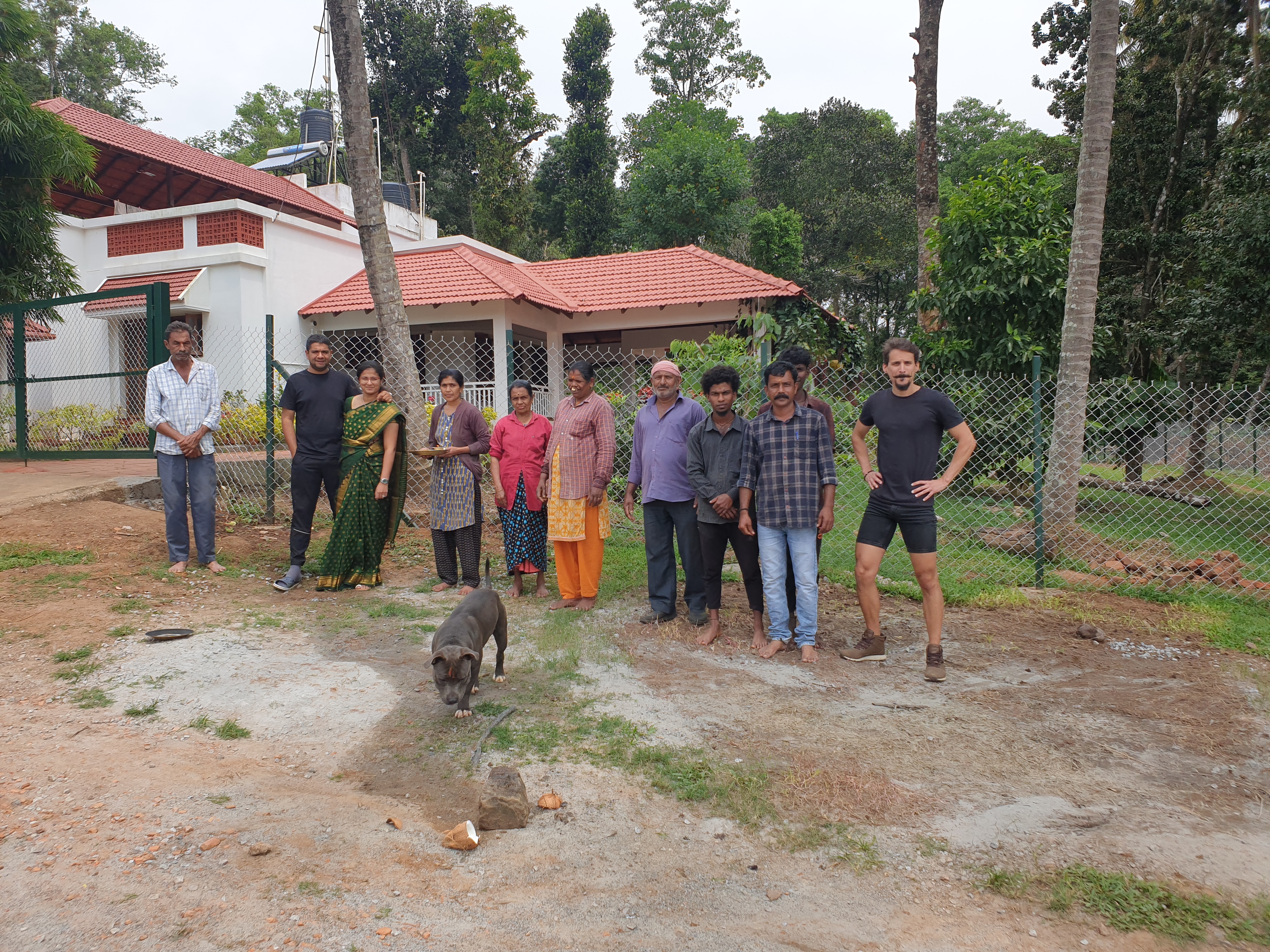
Places of coffee origins. Places of coffee producers. Places of “distant” magic. Fairly so, these places are very often so distant from the places of consumers, both physically and culturally, that anybody involved in the coffee business will be romantically inclined to think of them as “Mekkas of the notion”. Places where once, we would like to go.
But because of its distance and also most likely because of ‘not always so accurate’ stories we might hear, the very first origin trip one makes, has a good potential to serve as a classic story of revelation, when romanticised vision will meet reality. I personally believe that stories we often pass on to others are influenced by our own interests. Either to make our adventure more colourful, as the modern age so much demands, or we have other reasons to filter what we’ve seen. I’m not trying to say that this transcript will serve as the first, true and only, I also might have some agenda to fulfil but I believe that my intention here will be to provide the facts in the most authentic way, the same way as it was passed on to me while I was staying few weeks in India. I will try to achieve this by stating raw facts and maybe even try to debunk some myths just so the recipient has the best predisposition to make the clearest picture as possible about reality and struggles which people producing coffee, not only in this region might have. As a result, by talking quite openly and honestly, we can save ourselves time, since we can also define struggles and challenges more precisely and therefore find solutions quicker. I will insert some bits of colour to the story just because that is how I like it so I provide some entertainment for myself and with the hope to provide the same for the reader. And this is how this story goes…
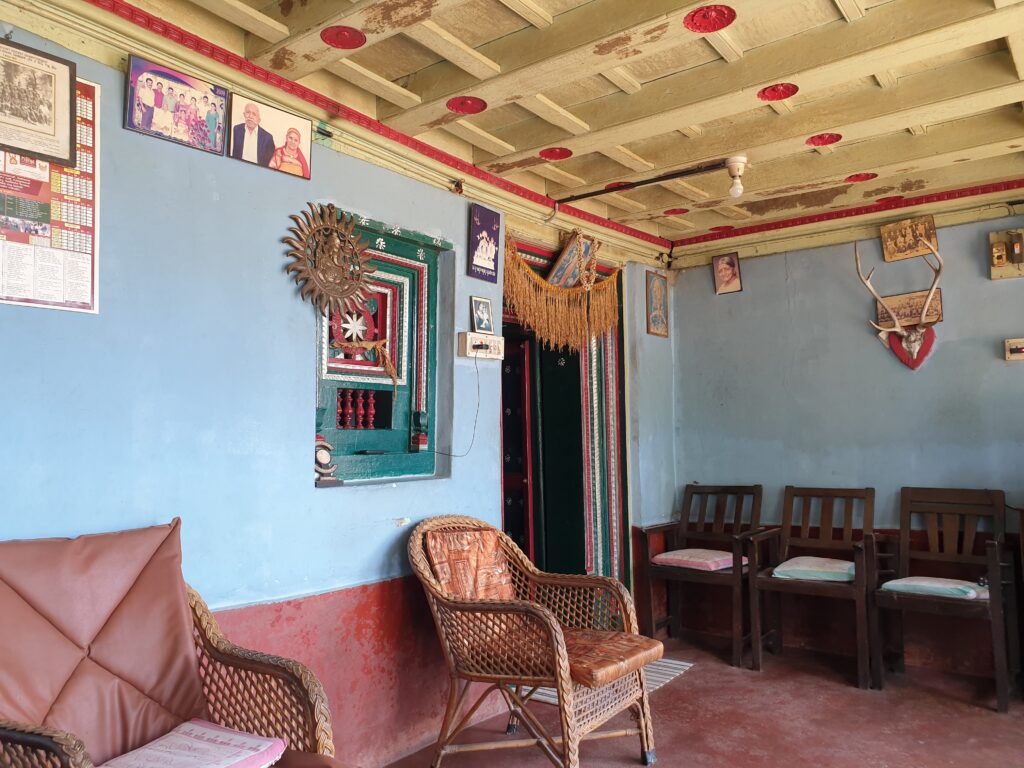
Coffee and other facts of India
I will aim to provide facts which are connected with coffee but also some side information which either made me interested or they are in fact somehow providing bigger context so we can better connect the dots later on. I will purposefully mention sensitive topics as well since they contribute to the full picture but will try to stay away from going into too much depth since I’m not qualified to do it and also have no desire to be trapped in conflicts resulting from it as an aftermath.
India is indeed massive. Population to this day is around 1.4 billion people which consist and it always have been through history of human era to around 20 % of global population. It just recently became the most populous country in the world by taking the title and surpassing China. This comes with its undeniable challenges but if we want to look at it from another perspective, it also provides a vast environment to explore which is so distinct from state to state. This applies to people, their traditions, cultures, songs, food and different spices they might locally prefer over others, landscapes, climatic base and so much more to provide endless variety.
Country itself is astonishingly beautiful, with large landscapes, fields, towns and cities full of life, mountains holding on to their secrets from long and steady observations they’ve made over the years, looking at the notions below them. Amazing natural setup will give you a chance to stop, contemplate and adore. But this proposition of peace and a place for calmness might not last for long since it comes as a contrast to the other side of India. Side which never stops with lots and lots of people. They’re going their ways and going, at least to the mind of a foreigner, in a very hectic, borderline “insane” manner. My very first journey from the Bengaluru airport to North Coorg (a journey which took a few hours) did capture this “controlled insanity” very well. Very often, especially from the beginning and most likely as an adaptation process, I was completely confused by the notions on the roads. Constant honking, unexplained and incomprehensive number of cars coming out of various directions at any time and without previous warning, disobeying my usual rules of traffic left me in shock. But after a while you learn to accept. There’s an order in this disorder.
Country holds its strong position as a spiritual place as many people travel here to get connected with their inner self. The 2011 census reported the religion in India with the largest number of followers of Hinduism (around 80%). Therefore many encounters might increase potential chance for enlightenment when talking to right people and visiting right places but one thing which will happen for sure is that you will be accompanied on your travels (no matter where you go) by companion which is ever present on every corner, every side way, smaller street, larger highway, in front of the market, behind it, left, right, everywhere…holy friend cow. Article 48 of the Indian constitution prohibits slaughter of the cows, making it a criminal offence in most states of India. Therefore one thing anybody should remember when visiting this beautiful country is to not ever question the rightful position of the cow when in the middle of your path. Just patiently wait for it to move. And they do so, you just really HAVE to wait. They don’t provide conversations which some might seek for already mentioned enlightenment but they give you that extra time to stop and contemplate while you wait 🙂
Like so many other places in the world, India had its experience with colonialism when somebody “big” came to claim rights to their land and India gained their independence only fairly recently in 1947. Brits have contributed and left their marks in so many places but so as India left the mark in return in British culture. If I stay within the realm of the sensory world we can definitely say that Indian food is Brit’s favourite cuisine with curry being often related as ‘adopted national dish’, contributing more than £5bn to the British economy. Here your exploration doesn’t have a limit and you can get lost in a variety of veggies, fruits, spices and other different produce which will keep you occupied for long and I’m only skipping this part because I don’t have another five pages to dedicate to food. I will just say that even if you are only thinking about going to India to experience the food, it is worth the trip. It’s not a coincidence that a lot of world’s renowned chefs have said that if there was a place on Earth to become vegetarian and not have a feeling of missing out on anything, it would be India. Get your buds prepared though cause it will be a blast…literally. Brits have also left a mark on another staple product of India when black tea was added into chai recipe by their influence and profound love for the tea as a beverage. Chai is such a magical drink, fitting the mystical and spiritual story of the country so well. Presumably the king of India back in the day had asked his servants to make a drink which would heal his whole body and spirit (ayurvedic approach). Mixture of different spices which vary based on the region, water, milk, sugar (most likely jaggery, another staple product of India and Sri Lanka respectively) maybe ginger and only later on as an influence from Brits – black tea. You might want to explore the topic of chai elsewhere and I would strongly recommend so since this drink deserves your attention and most of all, your sensory evaluation. Just because the drink itself is so vastly misunderstood, mis prepared and served so wrong in so many places across the globe, finding the good one is worth your effort. There are places outside of India where a dedicated approach which goes to coffee is also invested into other products on the menu, chai not excluded. Find them, appreciate the drink, enjoy it and then go to India to be pleased at the source.
When it comes to coffee, it starts to be very intriguing and when I was talking about the intention to list raw, thruth-full facts which would provide better understanding of this origin with so much potential, the real mission starts with these very lines.
Some say that in order to fully understand the present, we have to look back and understand our past first. I’m on board with this philosophy and in order to understand what India is today, you really have to look back. More than 140 million years ago, India used to be part of an immense supercontinent called Gondwana which covered much of the Southern Hemisphere. More importantly for us from a coffee perspective, this also means that today’s India and today’s Africa used to be direct neighbours connected by land, sharing their environments, fauna and flora. But based on a geological report, Gondwana started to break apart around 120 million years ago and India was sent adrift across what was then known as Tethys Ocean at the speed of around 5 millimetres/year. Continent then sped up due to various reasons to the speed of around 15 millimetres/year resulting in a collision with Eurasia, forming what is today known as Himalayas, highest mountain range on Earth. It must have been a solid collision since the Himalayas are still rising by more than 1 cm/year due to this drastic Indian endeavour.
We deem Africa being origin of all coffee genetic material but this continental shift is very intriguing and shows you that despite few stories about how coffee managed to get to India through pilgrimage, stories of Baba Budhan and Dutch, later on Brits establishing coffee plantations after colonising it, this might not be a full story and India as once African direct neighbour, might be very realistically holding on some yet not fully discovered original coffee species.
A lot of people are very surprised to find out that India belongs to the top ten coffee producers in the world, easily jumping from 8th to 6th place. In the 2021 season India produced 5.2 million (60kg) bags (3.14% global output) with Arabica accounting for 1.4 million bags. This might be also the very reason why India doesn’t have its rightful recognition amongst other high quality coffee regions yet. Since most of its produce was considered lower quality, it went to blends and other ‘low cost’ coffee products.
Here the story also starts to drift into more interesting waters since India was initially producing Arabica back in the mid-nineteenth century but due to huge infestation of coffee leaf rust led many coffee farms switching into more resistant Robusta and Arabica/Liberica hybrids more suitable to local conditions of lower altitudes, supplying big corporations asking for coffee with more “robust, bold” flavours. The Coffee Board of India was established in 1907 with the mission to improve the quality of Indian coffee through various research and educational endeavours. Amongst others and as a result of this initiative we can today find these varietals cultivated in India:
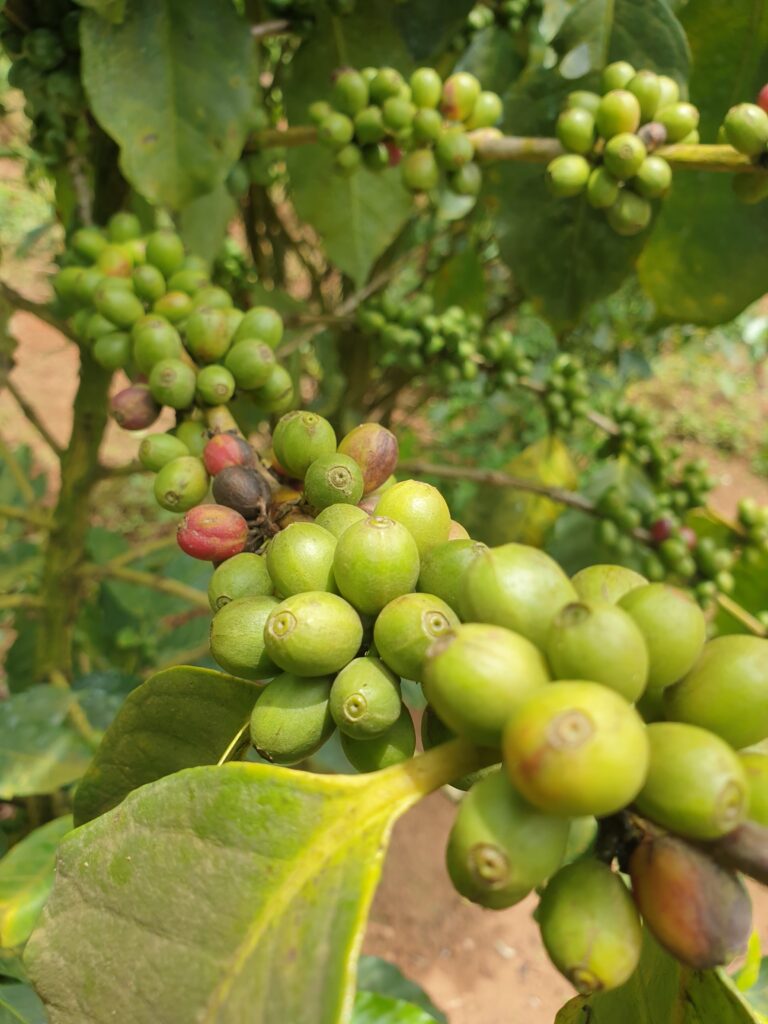
Cauvery – Indian sub variety of Catimor
Kent – a mutation of Typica, planted widely by Indian planters from around 1920’s
S795 – a hybrid bred by Indian botanists from Kent and S228 (a hybrid of C. arabica and C. liberica) in the 1940’s. Also has its presence in Indonesia under the name of ‘Jember’.
SL9 – a derivative of cross between the Ethiopian Arabica varietal ‘Tafarikela’ and ‘Hybrido – de – Timor’ (Timor is the first ever observed natural hybrid of C. arabica and C. canephora on the Island of Timor in Indonesia in 1920s. This observed phenomenon provided us with the very first insight into how we might start to play with coffee genetic material to alter its core, add to its genetic pool and also help with it’s survival for the future)
Chandragiri – semi-dwarf variety with very good overall performance, cup quality, yield and leaf rust resistance introduced by the Central Coffee Research Institute (CCRI) in December 2007
The vast majority of coffee is still produced in traditional growing regions in the southern states of Karnataka, Kerala and Tamil Nadu. Coffee is usually grown under a two – tier mixed shade canopy of evergreen leguminous trees, often intercropped with spices and fruit crops including pepper (India is home of predecessor of what we know as today’s pepper and still grows in the wild), cardamom, vanilla, orange and banana trees. Most Arabica farms lie at between 700 to 1400 metres above sea level and we might say that these conditions (not a terrain which makes a big difference!) are similar to what we can find in some Central American countries like Brazil or Guatemala. Coffees are traditionally processed by either natural or washed methods which are locally referred to as cherry and parchment respectively. I don’t want to mention ‘Monsoon Malabar’ here as a type of ‘sub processing method’ even though it has its origin in India. Only because coffee undergoes a series of conditions which by definition don’t align with specialty practises and therefore I don’t believe have a potential to stand against what we consider cup profile highlighting coffee’s origin.
All the history, local conditions and genetic material mentioned above results in what we know today as ‘classic’ Indian cup profile as having a big, heavier body/mouthfeel, with lower acidity and spicy flavours of cardamom, clove, pepper, nutmeg, perhaps a hint of tropical fruits and milk chocolate. Here, I’m trying to be careful with the word ‘classic’ and not venture into any bias but making certain expectations derived from what has been produced so far due to various reasons provided and my personal cupping experience. Later on, I will try to provide a new prospect of how our expectations and also potential of the Indian cup profile can change in the future.
Coming back to what I’ve mentioned above, Indian coffee today, frankly as coffee in all other producing regions in the world, is undeniably the result of all that has happened in the country in the past. Now, the only question is whether coffee coming out of the farms today is the best that regions have to offer and if not what can be done further to achieve two things – provide the local and world’s market with the best that Indian coffee can be while preserving the local natural world for generations to come and secure that farmers, who work the hardest at the beginning of coffee’s fascinating but equally challenging cultivation process can sustain themselves and their families. And alongside The Coffee Board of India there are other individuals and organisations in the country with the honest interest to achieve all of the goals above. I would like to talk further about one of the institutions/people like that whom I have had the pleasure to work with on one of their projects. Its name is The South India Coffee company and we will look into their history and ambitions a bit closer now.
The South India Coffee Company
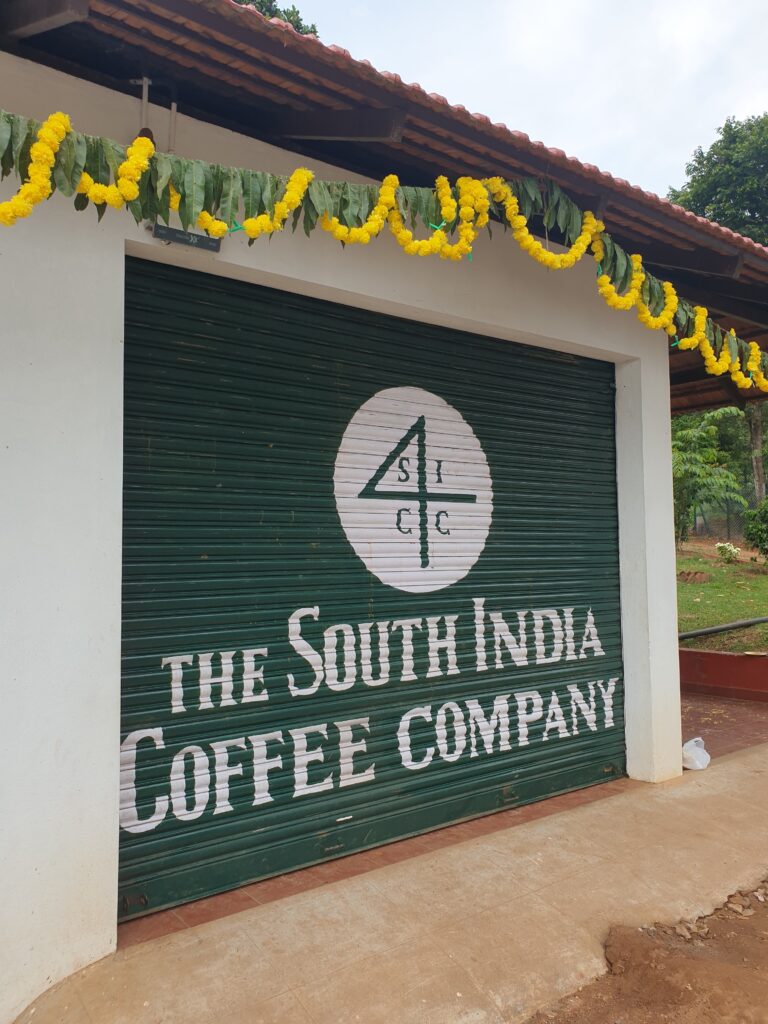
In my opinion, companies who have managed to stand the test of time are the ones who have their values strongly embedded in their ethos and started with honest intention to play a valuable role in their particular field and as a valuable part of society.
SICC started in 2017 by husband and wife duo Akshay Dashrath and Komal Sable. Their families have a long presence and history in North Coorg but this couple as 5th generation coffee planters have spent a lot of time living abroad and that gave them quite a realistic prospect of where the reputation of Indian coffee stands across the world. Undervalued and underrepresented. They have a very unique position of being “residents” of both producing and consuming worlds. Not only having understanding for both worlds but also having connection to both worlds makes them perfect ambassadors in an attempt to find honest solutions on how to make this business in a really sustainable way to preserve and to progress.
They have set on an equally challenging and exciting adventure to operate as a direct trade house operating in the Karnataka region of Western Ghats to help improve local agricultural practices on their own farms but most importantly to other coffee planters around as well. Talking about the important ethos dictating the right direction for our goals, Akshay and Komal aim to push higher degrees of profits to the farmers and make it financially beneficial for them to focus on long term investment in practices and processes which lead to sustainable and quality coffee. With their experience in agriculture, technology and relations they have a powerful arsenal to use to make this cause a success. And a powerful arsenal they will need if they are to succeed in an endeavour which grows exponentially as it starts to unravel its depths.
SICC started with the vision to build their story on the story of their forefathers but as our society is becoming more and more inter connected that also means a bit more complex.
Coffee has been part of our society for a long time and proved to have its reach into all corners of our world. Social, economical, environmental, agricultural, scientific and whether we like it or not geopolitical too.
Coorg is also known as Scotland of India due to the similar landscape and beautiful scenery of surrounding hills alongside with the whole area of Western Ghats being one of the top 10 most diverse ecosystems on the planet, no answer becomes simple once we start to understand all delicate connections. How to improve the quality of the local coffee production while sustaining as a business? How to preserve the ecosystem and manage to support and provide for local communities? How to protect but also manage to provide nature with everything it needs to thrive without having too much impact so we don’t start to damage our surroundings with our actions no matter how good the original intention was? How do we create a platform for the future so generations to come will see all jobs in society and particularly in our case, agriculture as viable business? How do we motivate and how do we approach all these conversations between two worlds, the world of producers and consumers, which might seem so distant from each other in terms of both distance, culture and operation?
Luckily with the very unique position SICC has and their presence in both worlds, they slowly start to find answers to these questions. When it comes to the environment there’s no doubt that their intentions are built on honesty. Having grown up in the region, they are bound with the memories and bound by blood to protect the land for future generations. Unlike so often, when we do our trips to foreign countries, we come to demand what we need, dictate and leave. SICC operate within the community which they’re trying to influence for the better therefore are building trust which goes generations back. Bio Forestry becomes a word not just for presentations and social media but it’s having a real impact on all decision making regarding their actions. They do not use any pesticides, they use organic matter which is created from hard manual weeding where all matter is left around the trees to become natural compost. How hard the labour is, I can confess from personal experience and my poor attempt to be a part of it. Having such a diverse fauna and flora, all species have to be protected so the system supports itself. Bee boxes are spread across the estates to cross pollinate but also to live. Elephants are roaming freely and despite your intention to be amused by this spectacular view, you don’t really want to end eye to eye with these magnificent creatures so you better use your senses to navigate your steps out of their way 🙂
Through their vision of protection and preservation they can already see fruit of their work when few species like indigenous local spiders are growing into enormous sizes due to careful movements around their webs. Indigenous flora is documented and protected, correct trees and spices are planted to give support to the soil but also to preserve Indian heritage. Black pepper is native to India and grows alongside wild nutmeg, cinnamon, mango, tamarind where all this also provides a solution as additional income when coffee falls short due to ever changing climate and weather patterns which are almost impossible to mitigate, when after such a long time this issue has been overlooked and underestimated across the globe. This additional income seems to be helpful even in scenarios when we demand various experimental post-fermenting practices, these experiments fail due to their very elusive nature and exclusive sounding deals become a thing of the past. They are actively participating and encouraging scientific research by gathering wild coffee samplings with the local community living in the forest and providing them with additional income. This also has a direct impact on their social and economic well being. Exciting discoveries proving that India holds unique coffee genetic material has already been uncovered also showcasing what a rich ecosystem this growing region around Harangi reservoir has. Coffee species will range from more known Robusta, Arabica, Excelsa, Liberica to eye opening, jaw dropping new species like Coffea Benghalensis, Travencorensis, Malabarica, Jenkinsii, Wightiana and others are still waiting in the wild forest. Research on soil composition is being done, Akshay is also using his IT background and working on a potential chance to use satellite images for soil analysis with intention to provide these for farmers through a simple app where they can easily access data and make correct decisions for their irrigation and fertilisation practices. This can then be easily spread across the whole community, reaching them faster than ever before. Installation of solar panels, raised african beds, advanced irrigation systems, post processing stations. Same as in the wine industry, Origin and terrain will have a massive impact on our cup profile. It is something to be proud about and if put very simply, our only job is to let the coffee speak for itself. Because of this reason, playing with post processing has to be done with care. We can definitely gain some interesting layers and gain some extra points on specialty quality scores if our coffees “lack” some vibrancy due to its natural predispositions. Team at SICC is therefore trying to use these experimental post processes to see where Indian coffee can be pushed whilst making sure the process is not taking the “spotlight” on the account of coffee’s Origin and genetics. Project with carbon credits where farmers could get their hands on higher coffee prices and improve their livelihood is underway as well. No rock is left untouched with an intention to provide real solutions, not just the ones favouring one side of the coffee chain but finding solutions in consideration of all aspects mentioned before and having all people and environment involved in mind.
Being able to see the whole picture and all its depths is one thing, finding proper solutions is another. Coming up with a way to connect all the dots of the chain and the right approach to conversations between the world of producers and consumers is another level. And that’s where I did come into the picture as a person from the end of the chain with a goal to shed some light into the problematics so we can glue it all together easier. This story started when I flew from London to India towards the end of September 2022 and this is how it went…
The great Indian trip
In order to understand why someone like SICC would invite me to India to talk to the local community about coffee, I have to quickly explain what I do. For a past decade I was fortunate enough to be part of one of the first specialty concepts in the UK, Taylor Street Baristas where I started behind the bar, eventually took on responsibility for workshops intended for local coffee enthusiasts, later on internal training for our baristas and eventually was leading international coffee program and participated on several events across the globe and opened few cafes in Canada, UK, France.
This experience and maybe even this exhausting document which I’m writing at the moment might suggest my ability of talking quite well but also provides me with good amount of experience with the world of consumers, understanding of how consumer behaves, what they expect from modern cafe experience, how we structure cafe logistics, choose and also evaluate coffee. I did mention a few times that the whole seed to cup journey is very intriguing and fascinating but suffers from questionable, let’s call them “operational issues” making it a little dysfunctional due to various reasons. One of them will be a big distance between two ends leading to a lack of good amount of communication between them and very often huge differences between how these two worlds operate.
We met with SICC through our contacts when I was helping out in one of London’s coffee roasteries during the period of Covid 19 and started talking. At that time I was also part of the local coffee team where I was responsible for training and quality. It happened to be that two owners, also outstanding people and good friends of mine are originally from India and Sri Lanka respectively. And similar as SICC have noticed that there’s very little Indian coffee on the specialty market despite its size and potential. We did launch a small collaboration with SICC and brought a few lots into London’s retail shelves, also into people’s attention and most importantly their coffee cups.
Some time later, to be more precise summer 2022 I was approached by SICC with an idea for a little adventure. Fly to India to judge Aeropress competition, organised in Coorg for a first time in its history but more importantly to visit few farms and run several talks in order to aid SICC’s mission to improve Indian coffee quality and help producers understand our end of the coffee chain so they can make better decisions at the farm level, potentially using this knowledge to get more for their crops and improve their agricultural processes.
It didn’t take me too long to think about it and I did start to plan for the trip. Getting ready to judge aeropress competition didn’t require much because the competition, since its very beginnings, was meant to be one of the most fun events which one can be part of with an idea to bring people together while having fun and making coffee. Only prerequisite would be a decent coffee palate, shorts and T-shirt (though T Shirts are optional)..
Getting ready for presentations for producers required way more if we were meant to succeed, help and not just preach about what we want. I did reach out to some of my good coffee friends who have done a few Origin trips and have experience with these conversations. I did try to make sure that the structure will be set to explain how the whole process of coffee chain work, explain two last ends of it which I have the most experience with (cafes/baristas/consumers and roasteries), explain what our obstacles and approach might be, how we set our cafes, our menus, how we evaluate coffee and what the current trends might be. We’ve also introduced them to a few tiers of specialty market during catered coffee tasting sessions where we tried coffees from lower end of the scale 80+, mid range 85-89 and top end of 90+. I did make sure to collect a solid collection of coffees when I was leaving my flat in London and can confess that I didn’t have much space left when I did pack all the coffee bags in my 40L backpack at first. I had to do some reshuffling in order to be able to pack a few more shorts and T Shirts mentioned above. This part was very important (not the shorts) since a lot of producers in today’s coffee world can’t afford to drink their own coffee, not even think about trying various coffees from around the globe to taste and compare. This trend is slowly changing in the past few years and more and more quality cafes are being opened in the countries of Origin. Last part of our conversation was meant to be about the world of producers where Komal and Akshey would take the lead. They would carefully explain practices on their own estates, as well as practices done on all other farms which are part of their program. Goal was to start the conversation and identify the easiest steps to get them to a higher coffee tier with the least effort. The end of the whole presentation was opened for discussion where producers would share what their struggles might be and all lead to discussion where we would try to introduce solutions together.
I was very pleased with the results and we’ve managed to run several sessions based on the region but also size of the farm, talking to more than 50 producers. Competition was also a blast, there were more people at the local heat in Coorg than at London’s heat which I did attend just a few days before departure to India and “our” Coorg champion ended up placing second in finals for India. We’ve travelled around, visited a few estates, talked to a lot of people. I was amazed by the nature, culture and of course local cuisine as well. Local cuisine will be truly a blast from start to finish and I still stand by my previous claims that Indian food is of the world’s best. Before heading to the end and potentially trying to wrap it all up with some conclusion, I also have to mention probably the most memorable moment, when we ran an event at a local boarding school for more than 100 kids and teachers. When Komal originally told me about the event it was meant to be for around 20 kids and I did start to prepare the session with this estimate. Few days later Komal told me that the number might be a bit higher and that was the moment I understood that a bit higher in India might be translated into: expect unexpected. Prepare for the unexpected and go with the flow was indeed the motto of the whole trip and that was the way I walked into a massive hall at the local boarding school, had a microphone given attached to me and saw a lot of eyes looking at us with an expectation of a great event. And a great event we delivered. We had a core structure prepared but, as so often, adapted to massive turn around on the spot and what we really couldn’t expect were the kids. They were absolutely amazing, had so much knowledge about coffee, so much passion and drive, everybody was a winner in the end but since we tried to support a little competition between them, one team ended up winning a paid visit to one of local specialty coffee shops for them and their families. This experience was an event with so much hope because if we don’t build this industry to last, it can all end with us. India is one of those very positive examples where a country of coffee origin is also able to retain a lot of its own produce for itself. New specialty coffee shops and roasteries are being opened across the whole country and in the case of India, you better expect a lot of it. I’ve got a feeling that if something happens in India, it always happens with a “big bang” so we might expect a strong industry with a great prospect and intention to deliver quality.
Outro and the end (for now)
India was amazing, nothing I could have prepared for and you can’t either so the only decision you have to make is when you’re packing your shorts and T-shirts and venture out on the trip which will hit all your senses. This sensual experience will be a blast whether you will have an intention of visiting some coffee farms or not but since the purpose of this article was coffee focused, I would recommend it. There are few farms in the region which are running a program of “full coffee experience” when you will stay at the farm surrounded by beautiful scenery, stay in awesome accommodation, you can take on an agricultural tour across the estates and end up in a cafe which is part of the farm and roasting their own coffee. This is what I call true seed to cup experience and was always dreaming about how amazing it could be to run a coffee workshop with this possibility at hand. If you can dream it, you can have it and with today’s possibilities it is really only a matter of a decision.
SICC will continue to be a leader for the Indian coffee market alongside with few others and will succeed on this mission to put Indian coffee on the specialty map and make sure that local community and their heritage will get the rightful recognition. You can and should play your role in it by seeking and recognizing quality Indian coffee in your local cafe. Ask about it, try it and you might even find some gems from Mooleh Manay estate or some other farms from their initiative. I do know at this very moment when finishing this article that SICC is already sending samples of some of their outstanding lots for season 2024. I will make sure to stay active and be part of this mission, will always be ready to say yes to another adventure and so you should be ready as well. In whatever way you can, tell everybody about this beautiful Origin or get your ticket. We might see each other on board.
Peace and enjoy your next cup whatever it might be.




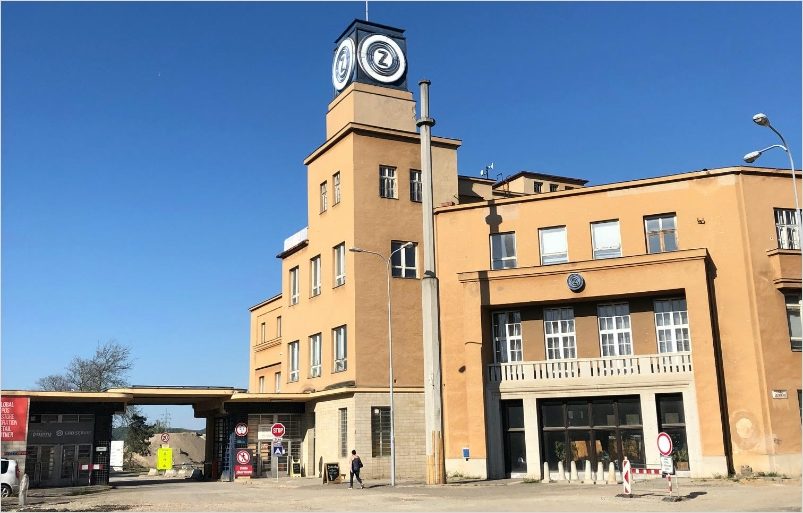
 try our coffee at home or in our café
try our coffee at home or in our café